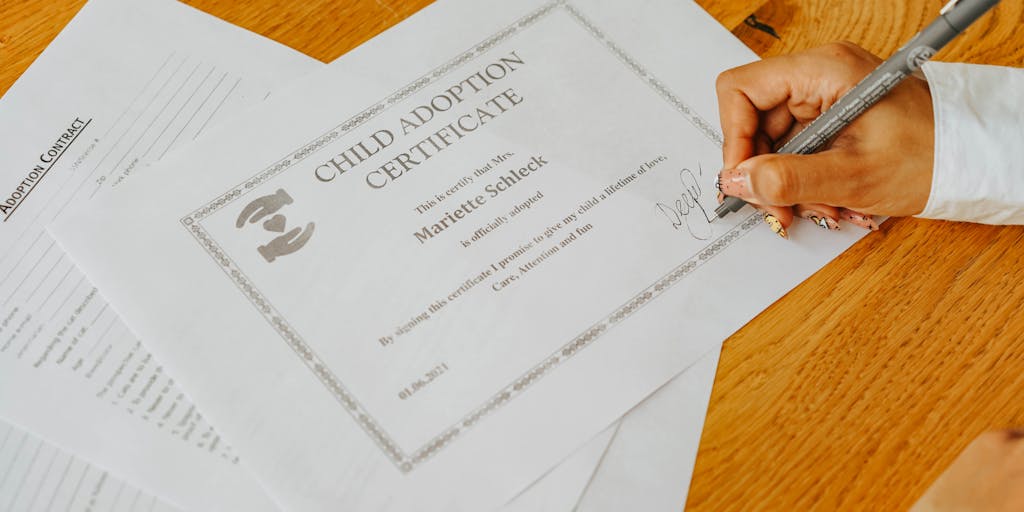When it comes to child support, many parents wonder how their obligations change as their children transition into adulthood, especially when pursuing higher education. The question often arises: do parents still have to provide financial support for their children while they are in college? The answer varies significantly across different states in the U.S., and understanding these requirements can be crucial for both custodial and non-custodial parents.
Requirements for Child Support for Post-Secondary Education Across States in US

In the United States, child support laws are primarily governed by state law, which means that requirements for post-secondary education support can differ widely. Some states mandate that parents continue to provide financial support for their children while they are enrolled in college, while others do not have such requirements. This can lead to confusion and disputes among parents, especially when it comes to planning for college expenses.
For instance, states like New York and New Jersey have specific laws that require parents to contribute to their children’s college expenses, often referred to as “post-secondary education support” (PES). In these states, the obligation can include tuition, fees, and sometimes even living expenses. On the other hand, states like Texas and California do not have such mandates, leaving it up to the parents to negotiate any support for college costs.
It’s essential to note that even in states that do require support, the specifics can vary. For example, some states may stipulate that support is only required if the child maintains a certain GPA or is enrolled full-time. This means that parents need to be aware of the nuances in their state’s laws to ensure compliance and avoid potential legal issues.
States that Require Child Support for Postsecondary Education Support (PES) and with Stipulation
As we delve deeper into the states that require child support for post-secondary education, it’s important to highlight those that have specific stipulations attached. In states like Illinois, parents are required to contribute to college expenses, but only if the child is under 23 years old and enrolled in an accredited institution. Similarly, in Massachusetts, the law mandates that parents support their children through college, but this support is contingent upon the child’s academic performance and enrollment status.
Moreover, some states allow for a more flexible approach. For example, in Florida, while there is no automatic requirement for college support, parents can agree to provide it as part of their divorce settlement or child support agreement. This flexibility can be beneficial, allowing parents to tailor their support based on their financial situations and the needs of their children.
Understanding these requirements is crucial for parents navigating the complexities of child support. If you’re interested in learning more about the specific laws in your state, resources like SafeSearch Kids provide comprehensive overviews of child support obligations related to college expenses.
Additionally, discussions on platforms like Reddit can offer real-life insights and experiences from other parents who have faced similar situations. Engaging with these communities can help you feel less isolated in your journey and provide practical advice based on others’ experiences.
In conclusion, while navigating child support for post-secondary education can be challenging, being informed about your state’s requirements and engaging with supportive communities can make the process smoother. Whether you’re a custodial or non-custodial parent, understanding your obligations and rights is key to ensuring that your child receives the support they need during their college years.
College Expenses and Child Support Laws

When it comes to child support, many parents wonder about their obligations once their children reach college age. The question often arises: do parents have to continue supporting their children through college? The answer varies significantly across different states in the U.S. Understanding these laws can help you navigate the complexities of child support and educational expenses.
States that Require Post-Secondary Support for Education Expenses in the US
In some states, the obligation to pay child support extends beyond high school, requiring parents to contribute to their children’s college expenses. This can include tuition, room and board, and other related costs. States like New York and New Jersey are known for their laws that mandate such support. For instance, in New York, parents may be required to contribute to college expenses until the child turns 21, depending on the circumstances outlined in the divorce decree.
Another example is California, where courts can order parents to pay for college expenses if it is included in the child support agreement. This can be a significant financial commitment, and parents should be aware of their obligations. If you’re curious about how this works in California, you can read more about it here.
Additionally, states like Illinois and Massachusetts also have provisions for post-secondary support, often requiring parents to contribute to their children’s education if it is stipulated in the divorce agreement. This can lead to some interesting discussions between parents about what is fair and reasonable.
States that do not Require Post-Secondary Support for Educational Expenses in the US
On the flip side, many states do not mandate that parents continue to pay child support for college expenses. For example, in Texas and Florida, child support typically ends when the child reaches the age of 18 or graduates from high school, whichever comes later. This means that once a child is off to college, parents may not have any legal obligation to contribute financially.
This can lead to a significant financial burden on students who may need to take out loans or find part-time work to cover their educational costs. It’s essential for parents and students to have open conversations about financial expectations and responsibilities as they approach this new chapter in life.
For those wondering about specific cases, you might find insights on platforms like Quora helpful, as many individuals share their experiences and legal interpretations.
When it comes to child support, many parents wonder whether their obligations extend beyond high school. The question of whether child support should cover college expenses is a complex one, influenced by state laws, parental agreements, and individual circumstances. Let’s dive into the nuances of this topic and explore what you need to know.
College Expenses in Child Support Orders

In some states, child support orders explicitly include provisions for college expenses. This means that parents may be required to contribute to their child’s education costs, which can encompass tuition, fees, and even living expenses. For instance, states like New York and New Jersey often have guidelines that allow for the inclusion of college expenses in child support agreements.
However, the specifics can vary widely. In many cases, the court will consider factors such as the child’s age, the parents’ financial situations, and the child’s academic performance. For example, if a child is attending a state university, the costs may be more manageable compared to a private institution. Understanding your state’s laws is crucial, and resources like Justia can provide valuable insights.
Parental Agreements on College Expenses

Beyond state mandates, many parents choose to create their own agreements regarding college expenses. These agreements can be formalized in court or simply be a mutual understanding between parents. It’s essential to communicate openly about expectations and responsibilities. For instance, one parent might agree to cover tuition while the other handles living expenses.
In some cases, parents may also include stipulations about the child’s academic performance. For example, they might agree to fund college only if the child maintains a certain GPA. This kind of arrangement can help ensure that both parents are on the same page and that the child understands the importance of their education. If you’re considering such an agreement, it might be helpful to consult with a family law attorney to ensure that your agreement is enforceable and clear.
Costs and Conditions in College Support Agreements
When drafting college support agreements, it’s important to consider not just the costs but also the conditions attached to them. For example, will the support continue if the child decides to take a gap year? What happens if the child changes their major or transfers schools? These are critical questions that can impact the financial obligations of both parents.
Additionally, some states have specific guidelines regarding the duration of support. In California, for instance, child support can extend through college, but only under certain conditions, as detailed in resources like Dinneen Law. Understanding these nuances can help you navigate the complexities of child support and college expenses.
Ultimately, the goal is to create a fair and reasonable agreement that supports your child’s educational aspirations while considering the financial realities of both parents. Engaging in open dialogue and seeking professional advice can make this process smoother and more effective.
Does A Divorced Parent Have To Pay For A Child’s College Education?
When it comes to the financial responsibilities of divorced parents, the question of whether one parent must contribute to a child’s college education often arises. This topic can stir up a lot of emotions and confusion. After all, college is a significant investment, and navigating the legal obligations can feel overwhelming. So, do divorced parents have to pay for their child’s college education? The answer varies by state and individual circumstances.
In some states, child support obligations extend beyond high school, requiring parents to contribute to college expenses. For instance, states like New York and California have provisions that allow for college tuition to be included in child support agreements. This means that if you live in one of these states, you might be legally obligated to help pay for your child’s college education, depending on the terms set during your divorce.
However, not all states have such requirements. In states like Texas, there is no legal obligation for parents to pay for college unless it is explicitly stated in the divorce decree. This can lead to misunderstandings, especially if one parent assumes that the other will contribute to college costs. It’s essential to clarify these expectations early on to avoid conflicts later.
Moreover, even in states where college expenses are included, the specifics can vary widely. Factors such as the child’s age, the parents’ financial situations, and the child’s academic performance can all influence whether a parent is required to contribute. For a deeper dive into this topic, you might find it helpful to read more about who pays for college expenses.
Modifying and Enforcing Orders
Once a child support order is established, it can be modified or enforced under certain circumstances. Life changes, such as job loss or a significant increase in income, can prompt a parent to seek a modification of their child support obligations. If you find yourself in a situation where you need to adjust your payments, it’s crucial to understand the legal process involved.
Enforcement of child support orders can also be a complex issue. If one parent fails to pay their share of college expenses, the other parent may need to take legal action to enforce the order. This could involve going back to court, which can be a daunting process. It’s often beneficial to consult with a family law attorney who can guide you through the necessary steps and help you understand your rights and obligations.
Additionally, some states have specific agencies that assist with child support enforcement. For example, in Oregon, the Department of Justice provides resources for parents dealing with child support issues, including support for students under 21. You can learn more about these services here.
Financial Aid Considerations in Child Support
As you navigate the complexities of child support and college expenses, it’s essential to consider how financial aid plays into the equation. Many families are surprised to learn that financial aid can significantly impact the amount of child support a parent is required to pay. For instance, if your child receives a substantial scholarship or grant, this may reduce the financial burden on both parents.
It’s also worth noting that financial aid applications often require information from both parents, regardless of whether they are married or divorced. This means that both parents’ incomes will be considered when determining the child’s eligibility for aid. Understanding how this process works can help you plan better and potentially reduce your out-of-pocket expenses.
For a more comprehensive look at how child support and college tuition intersect, you might want to check out this insightful article on who pays for college tuition. It provides valuable insights that can help you navigate these challenging waters.
When it comes to the financial responsibilities of divorced parents, one question often arises: should parents continue to support their children through college? This topic can stir up a lot of emotions and opinions, especially when it involves navigating the legal landscape of child support. Let’s dive into the nuances of this issue and explore what you need to know.
Can Courts Order Divorced Parents to Pay for a Child’s College Education?
Absolutely! In many cases, courts can and do order divorced parents to contribute to their child’s college education. This decision often hinges on several factors, including the state laws, the parents’ financial situations, and the child’s needs. For instance, some states view college expenses as a continuation of child support, while others may treat it as a separate obligation.
It’s important to note that not all states have the same approach. In some jurisdictions, a court may require parents to include college expenses in their divorce agreements, while in others, it may be left to the discretion of the judge. This variability can lead to confusion, so understanding your state’s laws is crucial.
Many States Give Courts Authority to Order Divorced Parent(s) to Pay for Child’s College Costs
Did you know that many states explicitly allow courts to mandate college support? States like New York, New Jersey, and Massachusetts have provisions that enable judges to order parents to pay for their child’s college tuition and related expenses. This can include costs for housing, books, and even transportation.
For example, in New York, the law allows for the inclusion of college expenses in child support agreements, provided that the child is attending an accredited institution. This means that if you’re a parent in New York, you might find yourself legally obligated to help fund your child’s education, even after they turn 18.
On the other hand, states like Texas and Florida may not have such clear-cut laws, leaving it up to the parents to negotiate these terms during divorce proceedings. This can lead to significant differences in how college expenses are handled, so it’s wise to consult with a legal expert familiar with your state’s regulations.
Most Courts Enforce Agreements to Pay for Child’s College Expenses
Once an agreement is in place regarding college expenses, most courts take these commitments seriously. If a parent fails to uphold their end of the bargain, the other parent can seek enforcement through the court system. This means that if you’ve agreed to pay for your child’s college tuition, you’re legally bound to do so, and failure to comply can lead to serious consequences.
Moreover, it’s not just about the money; it’s about the commitment to your child’s future. Courts often look favorably on parents who are willing to invest in their child’s education, as it reflects a shared responsibility for their upbringing. This can also foster a sense of cooperation between parents, which is beneficial for the child’s emotional well-being.
In conclusion, understanding the legal landscape surrounding child support and college expenses is essential for divorced parents. Whether you’re navigating these waters yourself or supporting a friend through the process, being informed can make a significant difference. If you’re interested in learning more about how to effectively market your services as a family law attorney, check out the Best YouTube Marketing Agencies for insights on reaching your audience.
For those looking to expand their knowledge on digital marketing strategies, consider exploring the Best Digital Marketing Podcasts to stay updated on the latest trends.
Ultimately, the journey through child support and college expenses can be complex, but with the right information and support, you can navigate it successfully. If you have any questions or need further guidance, feel free to reach out!
When it comes to child support, many parents wonder about their obligations once their children reach college age. It’s a complex issue that varies significantly from state to state. Understanding the nuances of child support laws can help you navigate this challenging landscape. So, what do you need to know about child support obligations during college years?
Courts Assess Several Factors in Determining a Parent’s Payments
Child support is not a one-size-fits-all scenario. Courts take a variety of factors into account when determining how much a parent should pay, especially when it comes to supporting a child through college. For instance, the best interests of the child are always at the forefront of these decisions. Courts often consider the child’s educational needs, the parents’ financial situations, and the child’s own ability to contribute to their education.
In many states, the court will look at the cost of tuition, room and board, and other related expenses. This means that if your child is attending a private university, the costs could be significantly higher than if they were attending a public institution. Additionally, courts may also consider whether the child is living at home or on campus, as this can affect living expenses.
It’s also important to note that some states have specific laws regarding how long child support must continue. For example, in states like California, child support can extend until the child is 19 years old or graduates from high school, whichever comes first. However, in other states, support may continue through college, depending on the circumstances.
Courts Consider Income and Assets
Another critical aspect that courts evaluate is the income and assets of both parents. This includes not only salaries but also any additional sources of income, such as investments or rental properties. If one parent has a significantly higher income, the court may require them to contribute more towards college expenses.
Moreover, courts may also look at the assets each parent possesses. For instance, if one parent has substantial savings or a trust fund set aside for the child’s education, this could influence the court’s decision on how much support is necessary. It’s essential to be transparent about your financial situation, as any discrepancies can lead to complications down the line.
In some cases, parents may also be required to provide documentation of their financial status, including tax returns and bank statements. This transparency helps ensure that the court can make a fair and informed decision regarding child support obligations.
Each Family Has its Own Facts – Financial and Otherwise – for a Court to Consider
Every family is unique, and this individuality plays a significant role in how courts determine child support obligations. Factors such as the child’s academic performance, their commitment to education, and even their career aspirations can influence the court’s decision. For example, if a child is pursuing a degree in a field with high earning potential, the court may be more inclined to support their education financially.
Additionally, the relationship between the parents and the child can also impact the court’s ruling. If one parent has been more involved in the child’s education and upbringing, the court may consider this when determining support obligations. It’s crucial to present a comprehensive picture of your family’s circumstances to ensure that the court understands the context of your situation.
Ultimately, navigating child support through college can be a daunting task, but understanding the factors that courts consider can empower you to advocate for your child’s best interests. If you’re facing this situation, it may be beneficial to consult with a legal expert who specializes in family law to help you navigate the complexities involved.
As parents, we often find ourselves navigating the complexities of child support, especially when it comes to higher education. The question of whether child support extends into college years can be a significant concern for many families. Let’s explore how different states handle this issue and what it means for you and your child.
Can California Child Support Require Payment for College?
In California, the landscape of child support is quite nuanced. Generally, child support obligations end when a child turns 18 or graduates from high school, whichever comes later. However, California law does allow for the possibility of extending support for college expenses, but this is not automatic. Parents must explicitly agree to continue support for college costs, which can include tuition, books, and living expenses.
It’s essential to understand that this agreement should ideally be documented in a divorce decree or a child support order. If you’re in California and considering this option, it’s wise to consult with a family law attorney to ensure that your agreement is enforceable and clearly outlines the responsibilities of both parents.
Children May Need to Extend College Beyond 4 Continuous Years – Who Pays then?
Have you ever thought about what happens if your child needs more than four years to complete their degree? This situation is more common than you might think. Many students take longer due to changing majors, part-time enrollment, or personal circumstances. In such cases, the question arises: who is responsible for the additional costs?
In California, if both parents have agreed to support their child through college, they may also need to discuss how to handle any additional years. This can be a tricky conversation, as it involves not just financial considerations but also emotional ones. Parents should communicate openly about their expectations and limitations regarding extended support. It’s also beneficial to have a clear plan in place, which can help avoid misunderstandings later on.
Limitations on College Expenses
While many parents are willing to support their children through college, it’s crucial to set boundaries. In California, child support for college does not automatically cover all expenses. Typically, parents can agree on specific limitations, such as:
- Tuition fees at a public university versus a private institution.
- Caps on living expenses, such as rent and food.
- Exclusions for non-essential costs, like entertainment or travel.
Establishing these limitations can help both parents manage their finances and ensure that the support provided is reasonable and fair. It’s also a good idea to revisit these agreements periodically, especially if financial situations change.
In conclusion, understanding the nuances of child support in relation to college expenses is vital for parents. Whether you’re in California or another state, having clear agreements and open communication can make a significant difference in navigating this complex landscape. If you’re interested in learning more about related topics, check out our articles on Best Pinterest Marketing Agencies or Best Instagram Advertising Agencies for insights that can help you in other areas of your life.
Can California Child Support Last Through the College Years?
When it comes to child support, many parents wonder about their obligations as their children transition into adulthood, particularly regarding college expenses. In California, the law is quite clear: child support typically ends when a child turns 18, unless they are still in high school. However, what happens when that child heads off to college? This is where things can get a bit murky.
In California, while there is no automatic requirement for parents to continue paying child support during college, it is possible to include college expenses in a child support agreement. This means that if both parents agree, they can outline specific financial responsibilities for college tuition, fees, and even living expenses. It’s essential to have these discussions early and to document any agreements to avoid misunderstandings later on.
Moreover, if you’re navigating a divorce or separation, it’s wise to consult with a family law attorney who can help you understand your rights and obligations. They can provide insights into how to structure your child support agreement to include college expenses, ensuring that both parents are on the same page.
The Exceptions
While many states have standard practices regarding child support, there are exceptions that can affect how long support lasts. For instance, some states may require support to continue if the child is enrolled in college full-time. This can vary significantly based on individual circumstances and the specific terms of the divorce decree or separation agreement.
In California, if a child is attending college, parents may be encouraged to contribute to their education, but it’s not mandated by law. This flexibility allows parents to negotiate terms that work for their unique situations. For example, if one parent has a higher income, they might agree to cover a larger portion of college expenses, while the other parent may handle living costs.
It’s also important to note that if a child becomes financially independent or drops out of college, the obligation for support may cease. This is why clear communication and legal guidance are crucial in these situations.
Child Support Ends Before College
Many parents are surprised to learn that child support can end before their child even reaches college age. In most states, including California, child support obligations typically conclude when a child turns 18, unless they are still in high school. This means that if your child graduates at 17, your financial responsibilities may end sooner than you anticipated.
This can lead to significant financial adjustments for both parents. For instance, if you were relying on child support to help with college expenses, you might need to reassess your budget and savings plans. It’s a good idea to start planning early, considering how you will manage college costs without the support you once received.
Additionally, if you’re a parent who has been receiving child support, it’s essential to have open discussions with your ex-partner about future financial responsibilities. This proactive approach can help prevent conflicts and ensure that both parents are prepared for the financial realities of college.
Ultimately, understanding the nuances of child support laws in your state can empower you to make informed decisions about your child’s future. If you’re unsure about your obligations or rights, seeking advice from a legal professional can provide clarity and peace of mind.
As your child approaches the age of adulthood, a myriad of questions may arise regarding their future, especially concerning education and financial support. One of the most pressing issues for many parents is whether child support obligations extend into college years. Understanding the nuances of child support laws can be complex, but it’s essential for planning your child’s educational journey.
Support for Students Ages 18 – 21
In many states, child support does not automatically end when a child turns 18. Instead, some jurisdictions allow for support to continue until the child reaches 21, particularly if they are enrolled in college. This can be a relief for parents who want to ensure their child has the financial backing needed to pursue higher education.
For instance, states like New York and California have provisions that allow for child support to cover college expenses, provided that the child is attending school full-time. This means that parents may be required to contribute to tuition, books, and other related costs, which can significantly ease the financial burden on young adults.
However, it’s important to note that the specifics can vary widely. Some states may require a formal agreement or court order to extend support, while others may have automatic provisions in place. It’s wise to consult with a family law attorney to understand your obligations and rights in your state.
Parents Can Agree to Share College Costs
One of the most effective ways to navigate college expenses is through mutual agreement between parents. If both parents are on board, they can create a plan that outlines how they will share the costs associated with their child’s education. This can include tuition, housing, and even living expenses.
For example, if one parent is more financially stable, they might agree to cover tuition while the other handles living expenses. This collaborative approach not only alleviates financial stress but also fosters a sense of teamwork in supporting the child’s future. It’s essential to document any agreements in writing to avoid misunderstandings later on.
Moreover, having open discussions about finances can help set realistic expectations for the child as well. They can understand the value of education and the sacrifices their parents are making, which can motivate them to take their studies seriously.
Child Attending School Requirements
When it comes to child support for college, there are often specific requirements that must be met. Generally, the child must be enrolled in an accredited institution and attending classes full-time. This requirement ensures that the support is being used for educational purposes and not for other activities.
In some states, parents may also need to provide proof of enrollment and academic progress to continue receiving support. This can include submitting transcripts or proof of registration each semester. It’s a good idea to keep communication open with your ex-partner about these requirements to ensure compliance and avoid any potential disputes.
Additionally, some states may have stipulations regarding the child’s age or academic performance. For instance, if a child drops out of college or fails to maintain a certain GPA, support obligations may be reevaluated. Understanding these nuances can help you prepare for any changes in your financial responsibilities.
In conclusion, navigating child support through college can be a complex but manageable process. By understanding your state’s laws, communicating openly with your co-parent, and setting clear expectations, you can help ensure that your child has the support they need to succeed in their educational endeavors. If you’re looking for more insights on related topics, check out our articles on Best Amazon Marketing Agencies or Best Twitter Marketing Agencies for additional resources that might help in your planning.
When it comes to child support, many parents wonder about their obligations once their child reaches adulthood, especially if the child is pursuing higher education. The rules can vary significantly from state to state, leading to confusion and uncertainty. So, what do you need to know about child support obligations during college years? Let’s dive into the details.
Child Attending School Support Orders
In some states, child support can extend beyond the age of 18 if the child is enrolled in college. This means that parents may still be required to contribute financially to their child’s education and living expenses. The rationale behind this is that many young adults are still dependent on their parents for support while they pursue their studies.
For instance, states like New York and California have provisions that allow for child support to continue while a child is attending college. In New York, the law stipulates that parents may be required to support their child through college until they reach the age of 21, provided the child is enrolled full-time. Similarly, California courts may order support to continue for a child attending college, but this is often contingent on the specifics of the custody agreement.
It’s important to note that the amount of support can vary based on several factors, including the parents’ income, the child’s needs, and the cost of the college. Courts typically consider these elements when determining the appropriate support amount. If you’re navigating this situation, it’s wise to consult with a legal expert who can provide guidance tailored to your circumstances.
Child Attending School FAQs
As you ponder the complexities of child support during college, you might have some pressing questions. Here are a few common inquiries that many parents have:
- Can support continue after a child turns 18?
- What if the child decides not to attend college?
- How is the amount of support determined?
- Are there any exceptions to the rules?
Understanding these questions can help clarify your obligations and rights. For example, in many states, support can indeed continue after a child turns 18 if they are enrolled in college. However, if the child opts not to pursue higher education, the obligation may cease, depending on the state laws and the original support agreement.
Can support continue after a child turns 18?
Absolutely, in many cases, support can continue after a child turns 18, especially if they are enrolled in college. This is a crucial point for parents to understand, as it can significantly impact financial planning. For example, if you live in a state like Illinois, the law allows for child support to continue until the child is 19 or graduates from high school, whichever comes first. If the child then chooses to attend college, support may be extended further, depending on the circumstances.
It’s essential to have clear communication with your co-parent about expectations and responsibilities during this time. If you’re unsure about how to navigate these discussions, consider seeking mediation or legal advice to ensure that both parties are on the same page.
In conclusion, understanding the nuances of child support through college can help you make informed decisions. Whether you’re a parent currently navigating this landscape or someone looking to prepare for the future, being aware of your state’s laws and regulations is key. If you’re interested in learning more about related topics, check out our articles on Best Snapchat Marketing Agencies or Best Facebook Advertising Agencies for insights that can help you in your journey.
What should I do for child support to continue under my Oregon order?
If you’re navigating the complexities of child support in Oregon, especially regarding college expenses, it’s essential to understand your obligations and options. In Oregon, child support can extend beyond the age of 18 if the child is enrolled in college. To ensure that support continues, you should take proactive steps. First, communicate with your ex-partner about the child’s educational plans. It’s crucial to have a clear agreement on how expenses will be shared.
Next, you may need to file a motion with the court to modify the existing child support order. This is particularly important if the original order did not specify support for college expenses. The court will consider factors such as the child’s needs, the parents’ financial situations, and the child’s academic performance. Keeping detailed records of all communications and expenses related to your child’s education can also be beneficial.
Additionally, consider consulting with a family law attorney who specializes in child support issues. They can provide tailored advice and help you navigate the legal landscape effectively. For more insights on legal support, check out Best Live Chat for Lawyer Websites.
Does support continue during regularly scheduled breaks from school?
This is a common question among parents who are managing child support during their child’s college years. In Oregon, child support typically continues during regularly scheduled breaks from school, such as summer vacations or winter holidays. The rationale is that the financial responsibilities do not cease simply because the child is not attending classes. However, the specifics can vary based on the terms of your child support order.
It’s important to review your order to see if it explicitly addresses breaks. If it doesn’t, you may want to clarify this with your ex-partner or seek a modification through the court. Open communication is key here; discussing expectations during breaks can prevent misunderstandings and ensure that both parents are on the same page.
Moreover, if your child is working during breaks, it might be worth discussing how that income affects support obligations. Each situation is unique, and understanding the nuances can help you navigate these periods smoothly.
When does support stop for an Oregon order?
Understanding when child support stops is crucial for both parents. In Oregon, child support generally ends when the child turns 18, but this can change if the child is still in high school or enrolled in college. If your child is still pursuing their education, support may continue until they graduate or turn 21, whichever comes first.
However, there are exceptions. If the child becomes emancipated or if the parents’ financial situations change significantly, support may be modified or terminated. It’s essential to keep the court informed of any changes that could affect support obligations. If you’re unsure about your specific situation, consulting with a family law attorney can provide clarity and help you understand your rights and responsibilities.
For those looking to enhance their understanding of legal matters, exploring resources like Best Google Adwords Advertising Agencies can be beneficial. They can help you find the right legal support tailored to your needs.
What if a child is not enrolled at least one-half time or stops making satisfactory academic progress?
When it comes to child support for college, one of the critical factors is the child’s enrollment status. If a child is not enrolled at least half-time in an accredited institution, or if they fail to maintain satisfactory academic progress, the support obligations can change significantly. This situation can be quite concerning for both parents and the child, as it may lead to a suspension or termination of support payments.
For instance, many states have specific guidelines that dictate what constitutes satisfactory academic progress. Typically, this means maintaining a certain GPA or completing a minimum number of credits each semester. If a child falls below these standards, the paying parent may petition the court to modify or terminate the support order. It’s essential to understand that these rules can vary widely by state, so consulting with a family law attorney familiar with local regulations is crucial.
Moreover, if a child decides to take a break from school or drops out entirely, the support payments may also be affected. In such cases, the custodial parent should communicate with the other parent and possibly seek legal advice to navigate the complexities of child support obligations. Have you ever found yourself in a situation where academic performance impacted financial support? It can be a challenging conversation to have, but understanding the legal framework can help ease the process.
I’m a Child Attending School and my support order was suspended. How can I start support again?
If you find yourself in the position of having your child support order suspended while attending school, you might be wondering how to reinstate it. The first step is to gather all necessary documentation that proves your enrollment status and academic progress. This could include transcripts, enrollment letters, or any correspondence from your educational institution.
Once you have your documents in order, the next step is to reach out to the court that issued the original support order. You will likely need to file a motion to reinstate support, which may involve a hearing where you can present your case. It’s important to articulate how your educational pursuits are directly tied to your need for support. For example, if you are pursuing a degree that will significantly enhance your career prospects, make sure to highlight that.
Additionally, consider seeking legal assistance to navigate this process effectively. An attorney can help you understand the specific requirements in your state and ensure that your motion is filed correctly. Have you thought about how your educational goals align with your financial needs? It’s a vital connection that can help you advocate for yourself during this process.
Can a child between age 18 and 21 in Oregon Youth Authority custody qualify for support as a Child Attending School?
In Oregon, the question of whether a child aged 18 to 21 in the custody of the Oregon Youth Authority can qualify for support as a Child Attending School is nuanced. Generally, the state recognizes that children in such custody situations may still require financial support, especially if they are pursuing education. However, eligibility can depend on various factors, including the nature of their custody and their enrollment status.
For instance, if a child in custody is enrolled in a program that provides educational opportunities, they may still be entitled to receive support. This is particularly relevant for those who are working towards their high school diploma or equivalent, or even pursuing higher education. It’s essential for guardians or parents to stay informed about the specific regulations that apply to their situation.
Moreover, if you are navigating this complex landscape, it may be beneficial to consult with a legal expert who specializes in family law and understands the intricacies of the Oregon Youth Authority’s policies. Have you encountered challenges in understanding how custody impacts educational support? It’s a common concern, and knowing your rights can empower you to seek the support you need.




















